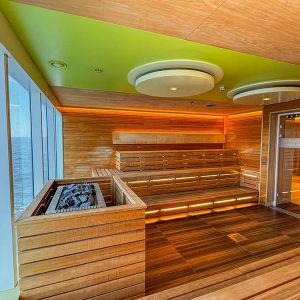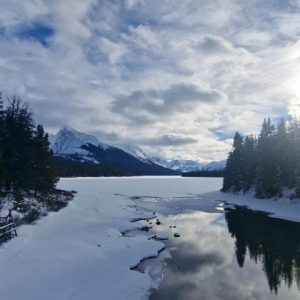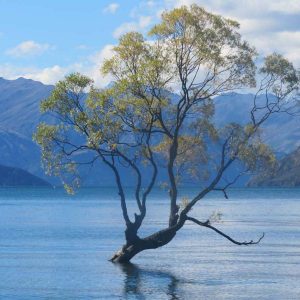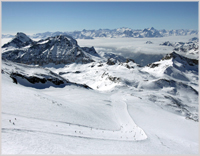 On the terrace of the Samovar tearoom in Cervinia I ordered orange pekoe. The waiter, mishearing, brought orange juice, freshly squeezed. In hindsight
On the terrace of the Samovar tearoom in Cervinia I ordered orange pekoe. The waiter, mishearing, brought orange juice, freshly squeezed. In hindsight
it was a happy mistake. I needed rehydrating after the last runoff the day. It had been hot, sweaty work. Close to the bottom the snow had turned to wet sugar.
Nobody was grumbling, however. For two days the sun had blazed from a near cloudless sky and on the upper slopes, dominated by Monte Cervino, temperatures had remained cool enough to keep conditions perfect. It would take more than a little the slush to wipe the smiles from skiers' faces.
Monte Cervino is the Italian name for the Matterhorn. Viewed from Switzerland it is probably the world's most recognisable mountain: a rough hewn blade waiting to be seized by some giant hand and plunged into the earth. Seen from across the border its profile is much less distinctive. This split personality is reflected, it seems, by contrasting ski pistes. Those above Zermatt, on the Swiss side, tend to be tougher than Cervinia's, which are predominantly wide and intermediate.
As the two areas are connected it is possible to have the best of both worlds. On the Cervinia side we set off from Testa Grigia at 3480 metres, headed for the village of Valtournenche nearly 2000 metres below. Measuring some 20 kilometres, this is claimed to be the longest run in the Alps – long enough, at any rate, to justify an al fresco apple juice en route. At the start the temperature had hovered around freezing point. Down in the valley it was 10 degrees C. The piste had shrunk to a thin strip between greenish brown meadows.
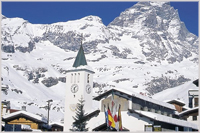 Back at the top the glorious spring weather encouraged us to cross into Switzerland, swinging down a broad, undemanding, perfectly prepared boulevard by the Theodul glacier. In search of something more challenging we took a T-bar lift, steep enough to deter a snowboarder in our company, to ski the otherwise deserted Hörnli black run, joining a winding forest track towards Zermatt, rehydrating in the sunshine at Furi and catching a series of lifts to head back across the border, for lunch at the Rifugio del Guide Cervino.
Back at the top the glorious spring weather encouraged us to cross into Switzerland, swinging down a broad, undemanding, perfectly prepared boulevard by the Theodul glacier. In search of something more challenging we took a T-bar lift, steep enough to deter a snowboarder in our company, to ski the otherwise deserted Hörnli black run, joining a winding forest track towards Zermatt, rehydrating in the sunshine at Furi and catching a series of lifts to head back across the border, for lunch at the Rifugio del Guide Cervino.
Mountain restaurants are good on both sides but eating on slopes in this part of Italy is perhaps the most enjoyable anywhere in the Alps. Expansive lunches, which need not break the bank, are somehow in keeping with the relatively benign nature of the terrain. In particular, nobody should leave without sharing a wooden board heaped with mixed antipasti. This is likely to include such Val d'Aosta specialties as fontina cheese with walnut bread, lardo – thin slices of pork fat cured with herbs and served with chestnuts in honey – and mochetta, or air dried chamois meat.
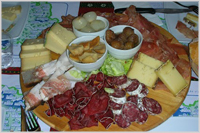 This can create a problem for the skiing foodie. Not only is the temptation to order a pudding and linger over a grappa or two strong enough to risk wiping out an afternoon on the slopes. It can also threaten to dull the appetite for dinner.
This can create a problem for the skiing foodie. Not only is the temptation to order a pudding and linger over a grappa or two strong enough to risk wiping out an afternoon on the slopes. It can also threaten to dull the appetite for dinner.
Not to fully appreciate the cooking at the Hotel Hermitage, where I stayed – beef carpaccio with anchovy cream and Parmesan mousse to start, perhaps, followed by stewed fillet of deer – would be a crime. Better resist nobly, I decided, and work off lunch with a little hard labour in the spring slush.
More information
The Hermitage can be booked through Elegant Resorts which offers a week's half board in low (winter 2013-14) season from £1790 per person. That includes flights but not transfers. These can be arranged by private car, though it’s worth checking whether hiring one and driving yourself would be more economical.
Further details of Cervinia at www.aosta-valley.co.uk.
Silver Travel Advisor recommends Inghams for ski holidays.

